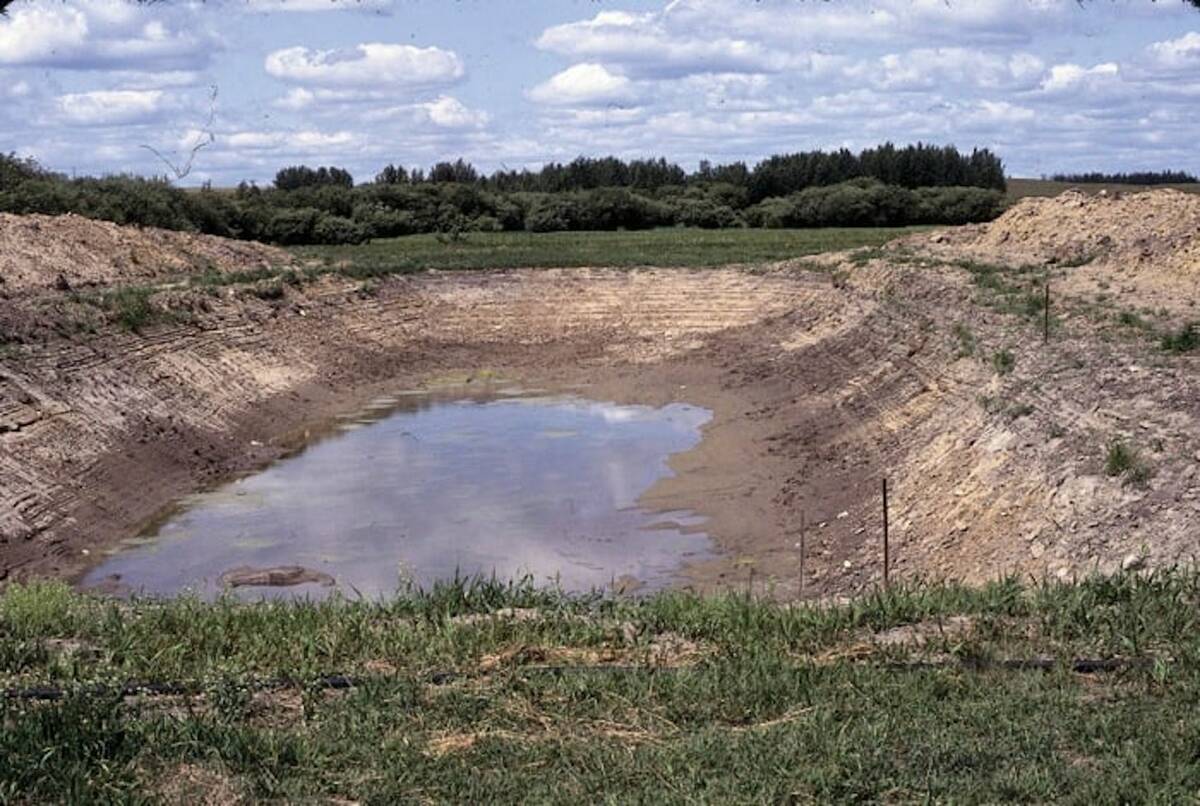Cattle producers are telling me that a close examination of the Breeding Soundness Evaluation form is warranted.
All conscientious breeders make these forms available before a sale or at the point of delivery.
Some parts of the form may be more applicable than others, depending on the specific use of the bull.
Has the bull just passed its test in one or more categories? Does its scrotal circumference just make the breed minimum? Do other specific things catch your attention, such as removed warts, old cuts on the penis or a previous frenulum? Is there any issue with its feet or legs that could affect future use?
Read Also

Dry summer conditions can lead to poor water quality for livestock
Drought conditions in the Prairies has led to an decrease in water quality, and producers are being advised to closely monitor water quality for their animals.
No bull is perfect, and the most important question on the form continues to be: “in the vet’s opinion, is the bull considered satisfactory on that day?”
Other issues are comments about softer testicles, a size difference in the testicles or the penis not extending out of the sheath.
No protrusion could simply mean there wasn’t enough stimulation or too much stimulation, but it could also mean a physical problem, such as erectile dysfunction or scarring of the penis to the side of the sheath.
Sometimes we may see a large swelling in the sheath, which indicates a potential problem.
I have even seen a couple of bulls over the years with a wart on their penis that was so large that it was unable to protrude.
The occasional bull goes down before we can stimulate it much, and these are unlikely to protrude as well.
It is ideal to see the penis every time.
Bulls that don’t protrude can be tranquilized after the semen sample is collected so that their penis extends passively. A veterinarian I know does this, and he can then honestly say he has seen the working apparatus.
Many of the smaller issues that we all comment on may not really have much of a detrimental effect on bulls’ breeding ability.
The veterinarian’s comment of softer testicles is still subjective. It may identify a problem or could simply be the variation we see between bulls.
Producers who test their herd bull’s semen every year can compare evaluations year to year to compare differences. Decreased results may be a sign of an increasing morphological defect or shrinking testicles and may indicate impending failure the following year.
Bigger testicles may yield a greater serving capacity as long as libido is good and the bull is physically sound. However, I have seen instances where abnormally large testicles were detrimental to breeding ability, so bigger is not always necessarily better.
Some bulls reach puberty a little later in their first year, so the yearling semen evaluations will on average be below the quality of bulls two years old and older. This is not really comparing apples to apples.
As well, most yearlings will be running with fewer cows.
As a result, we need to compare semen evaluations between bulls of the same age group.
Producers should also use caution with bulls that show evidence of seminal vesiculitis.
Most of these bulls clear up on their own or with treatment. However, some will never clear up and it is important they have a clean bill of health before they are used.
Most veterinarians will stain the supposed recovered sample and check closely for white blood cells to make sure there has been a complete recovery.
As always with semen evaluations, it is usually a good idea to check libido and ability to breed by observing the bull in its first few matings.
Producers who need bulls with higher serving capacity should closely scrutinize the ones that just pass the semen morphology or just make the breed minimum for scrotal size.
Talk to the breeder if there are any questions. They are more than happy to help select a bull that best fits a producer’s needs. Characteristics such as polled-horned, colour dominance, carcass characteristics and genetic testing can all be discussed.
A lot of data is available on bulls these days. The trick is identifying the most important information for the purchaser and making selections based on that criteria.
The old adage that you pay for quality definitely holds true in the bull business.

















